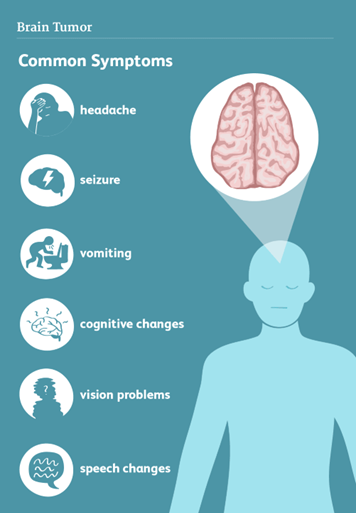A male client with a brain tumor is scheduled for a biopsy in the morning. During the admission procedure, the client has a tonic-clonic seizure that lasts 50 seconds. Following the seizure, the client is lethargic and confused and his wife tells the nurse that her husband has never had a seizure before and has always been alert and communicative. Which action should the nurse take?
Notify the emergency response team of the client's seizure.
Keep orienting the client to time and place until he is less confused.
Explain the postictal state that usually follows seizures.
Ask the wife to wait outside the room until the nurse can talk with her.
The Correct Answer is B
Choice A: Notifying the emergency response team of the client's seizure is not a necessary action for the nurse, as the seizure has already stopped and there is no immediate threat to the client's life. This is a distractor choice.
Choice B: Keeping orienting the client to time and place until he is less confused is an appropriate action for the nurse, as this can help restore the client's cognitive function and reduce his anxiety after a seizure. Therefore, this is the correct choice.
Choice C: Explaining the postictal state that usually follows seizures is not a priority action for the nurse, as this can be done later when the client is more alert and receptive. This is another distractor choice.
Choice D: Asking the wife to wait outside the room until the nurse can talk with her is not a considerate action for the nurse, as this can increase her stress and worry about her husband's condition. This is a contraindicated choice.

Nursing Test Bank
Naxlex Comprehensive Predictor Exams
Related Questions
Correct Answer is A
Explanation
Choice B reason: Blood pressure of 122/74 mm Hg is within the normal range for a postpartum client and does not indicate an infection. However, the nurse should monitor for signs of preeclampsia or eclampsia, such as hypertension, proteinuria, headache, blurred vision, and seizures.
Choice C reason: Oral temperature of 100.2°F (37.9°C. is slightly elevated, but not necessarily indicative of an infection. A mild fever may occur within the first 24 hours after delivery due to dehydration or hormonal changes. However, if the fever persists or increases, the nurse should suspect an infection and notify the healthcare provider.
Choice D reason: White blood cell count of 19,000/mm^3 (19 x 10^9/L) is higher than the normal range, but not necessarily indicative of an infection. A leukocytosis or increased WBC count may occur as a normal response to stress or trauma during delivery. However, if the WBC count remains elevated or increases further, the nurse should suspect an infection and notify the healthcare provider.
Correct Answer is B
Explanation
Choice A reason: Explaining to the client that the dosage has been changed is not a safe action because it may not be true. The nurse should not assume that the prescribed dosage is correct or different from the previous one without verifying it with the healthcare provider or the medication record.
Choice C reason: Informing him that he may refuse the medication and documenting whether or not he takes it is not a responsible action because it does not address the issue of dosage discrepancy. The nurse should respect the client's right to refuse medication, but should also educate him about the benefits and risks of taking or not taking it. The nurse should also try to resolve any barriers or concerns that may affect the client's adherence to medication.
Choice D reason: Telling him to take the medication then verifying the dosage at the next healthcare team meeting is not a timely action because it may cause harm or complications to the client. The nurse should not administer any medication without checking its accuracy and appropriateness for the client. The nurse should also report and document any medication incidents as soon as possible.
Whether you are a student looking to ace your exams or a practicing nurse seeking to enhance your expertise , our nursing education contents will empower you with the confidence and competence to make a difference in the lives of patients and become a respected leader in the healthcare field.
Visit Naxlex, invest in your future and unlock endless possibilities with our unparalleled nursing education contents today
Report Wrong Answer on the Current Question
Do you disagree with the answer? If yes, what is your expected answer? Explain.
Kindly be descriptive with the issue you are facing.
